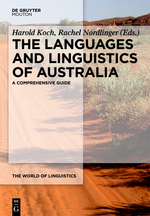The published Barcoo River (Queensland) expedition diary of explorer Edmund Kennedy (1852) was augmented with unpublished manuscript sources and republished by Edgar Beale (1983). In the context of the present paper the key augmentation came from a handwritten copy of Kennedy’s journal for the period 01 April 1847 to 24 January 1848 made by Rev W.B. Clarke, and held by the Royal Geographical Society of London (RGS, see Beale 1983:96-97).
In an entry for 01 October 1847, Kennedy reported an encounter with Aboriginal people who were ‘without exception the most friendly and best behaved Natives I met with on the journey’. According to the RGS manuscript, Kennedy recorded:
We obtained from this party some useful words, which are correctly written, according to their sounds, River Victoria, ((This name was later replaced by ‘Barcoo River’.)) “Barcoo”; Water, “Ammoo”; Grass, “Oo-lo-noo”; Fire, “Poordie” &c. (Beale 1983:142)
It is a pity that the rest of the list has not so far surfaced.
Read more
 Follow
Follow